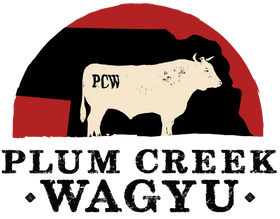Wagyu beef is celebrated worldwide for its extraordinary tenderness, rich flavor, and, most notably, its signature marbling. But what exactly makes this marbling so unique? The answer lies in a fascinating blend of genetics and carefully controlled feeding practices that work together to create this luxurious beef. Let’s delve into the science behind Wagyu marbling to understand what makes it so special.
The Role of Genetics
At the heart of Wagyu beef's incredible marbling is its genetic makeup. Wagyu cattle have been selectively bred for centuries to enhance traits that lead to superior meat quality. A key factor is a gene that influences fat distribution. In most cattle breeds, fat tends to accumulate around the muscles, leading to larger, exterior fat deposits. However, in Wagyu cattle, a specific genetic predisposition causes fat to be deposited within the muscle fibers, creating fine, even marbling throughout the meat.
This intramuscular fat is what gives Wagyu its characteristic melt-in-your-mouth texture. The high percentage of monounsaturated fats in Wagyu is not only responsible for the buttery mouthfeel but also makes the beef healthier compared to other varieties. This genetic advantage is what allows Wagyu to stand out among other premium beef products.
The Importance of Feeding Practices
Genetics alone, however, doesn’t tell the whole story. The way Wagyu cattle are raised and fed is equally important in developing the high marbling for which this beef is known. Wagyu cattle are typically raised on a specialized diet designed to promote slow growth and steady fat accumulation. This diet often includes high-energy grains like corn and barley, which are crucial in developing the fine marbling that defines Wagyu.
Feeding practices are highly controlled and tailored to the individual needs of the cattle. For instance, many Wagyu cattle are given a diet that is adjusted over time, beginning with a higher roughage content and gradually incorporating more grains. This approach helps the cattle develop intramuscular fat gradually and evenly, resulting in the intricate marbling patterns that make Wagyu so visually appealing and delicious.
The Science of Fat Deposition
The process of fat deposition in Wagyu cattle is a finely tuned balance of biology and management. As the cattle consume their specialized diet, the energy from the food is converted into fat, which is stored within the muscle tissues. The rate at which this fat is deposited, and the uniformity of its distribution, are key factors that influence the quality of the marbling.
This fat not only provides flavor but also impacts the texture of the meat. During cooking, the fat melts at a low temperature, creating a rich, juicy consistency that enhances the overall eating experience. The unique fatty acid composition of Wagyu, which includes a higher ratio of unsaturated fats, also contributes to its characteristic flavor profile—rich, yet clean, with a lingering umami finish.
Sustainable Practices and Quality Control
The controlled feeding practices used in Wagyu production are designed not only to maximize marbling but also to ensure ethical and sustainable farming. Many Wagyu farms prioritize the well-being of the cattle, providing them with stress-free environments and adhering to strict guidelines on diet and care. This careful attention to detail ensures that the marbling develops naturally, without the need for artificial enhancements, maintaining the integrity of the beef.
The science behind Wagyu marbling is a perfect blend of nature and nurture. The genetic predisposition of Wagyu cattle, combined with meticulous feeding practices, creates a beef product that is unparalleled in quality. Whether you're enjoying a Wagyu steak or a delicate slice of sashimi, you're experiencing the result of centuries of careful breeding and an advanced understanding of cattle nutrition. Wagyu marbling isn't just a visual treat—it's a testament to the art and science of producing the finest beef in the world.
Related Posts
Sustainability in Wagyu Ranching: How Plum Creek Wagyu is Committed to the Environment
Explore how Plum Creek Wagyu is committed to sustainability with practices like rotational grazing, water conservation, humane treatment of cattle, and more. Learn about our efforts to produce high-quality beef while protecting the environment.
Wagyu Beef vs. Angus Beef: A Flavor Showdown
Discover the differences between Wagyu beef and Angus beef in this comprehensive showdown. Learn about flavor, texture, and the overall eating experience to determine which premium beef is right for you.
Wagyu Beef Recipes for Every Season: From Summer Grilling to Winter Braising
Explore seasonal Wagyu beef recipes perfect for any time of the year. From summer grilling to cozy winter braises, discover easy and delicious ways to incorporate premium Wagyu into your meals.
Health Benefits of Wagyu Beef: Why It's a Premium Choice
Discover the health benefits of Wagyu beef, from its heart-healthy monounsaturated fats to its higher levels of omega-3 fatty acids and CLA. Learn why Wagyu beef is a premium choice for those seeking a flavorful yet healthier alternative to traditional meats.
Pairing Wagyu Beef with Wines: A Guide to the Perfect Match
Discover expert tips on pairing Wagyu beef with the perfect wines. From Ribeye to Filet Mignon, explore the best wine matches to elevate your dining experience and make every bite of Wagyu beef unforgettable.
The History and Origins of Wagyu Beef: From Japan to Nebraska
Explore the rich history of Wagyu beef, tracing its origins from ancient Japan to the modern-day farms of Nebraska. Learn about the unique breeding practices and cultural significance of Wagyu, and discover how Plum Creek Wagyu brings this exceptional beef to your table.








